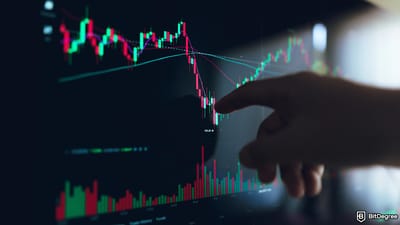Stop overpaying - start transferring money with Ogvio. Join the waitlist & grab early Rewards NOW! 🎁
In recent years, crypto has literally taken over the world. It seems that everywhere you look, you’ll find someone discussing cryptocurrencies, albeit often from very different angles. Among all of these discussions, though, you’ll often encounter a question - what is DeFi?
Indeed - while DeFi has largely become one of the most popular aspects of the crypto industry, as a whole, it’s still a mystery to many individuals out there. If you’re not looking how to invest in DeFi, you might simply be interested in the philosophy behind the phenomenon - either way, the question remains the same!
Truth be told, while the concept might seem complex and intricate, there are ways to approach it from a beginner-friendly perspective. In this guide, we’re going to do just that - stick around, and let’s get right into it!

Did you know?
Subscribe - We publish new crypto explainer videos every week!
What is SushiSwap? DEX & Sushi Token Animated Explainer


Table of Contents
What is DeFi: The Basics
To start things off, it’s probably worth addressing the core question, before we continue with some of the more-advanced stuff.
Latest Deal Active Right Now:So, then - what is DeFi crypto?
The acronym “DeFi” stands for decentralized finance. As the term might imply, it’s a sort of umbrella for a whole huge financial infrastructure that places an emphasis on decentralization.
This decentralization doesn’t just come out of anywhere, though - instead, DeFi is closely related to cryptocurrencies, or rather, the blockchain technology behind crypto.
Blockchains are, primarily, decentralized. Yes, there are exceptions, but for the sake of keeping things simple and confusion-free, let’s paint some things with a broad brush.
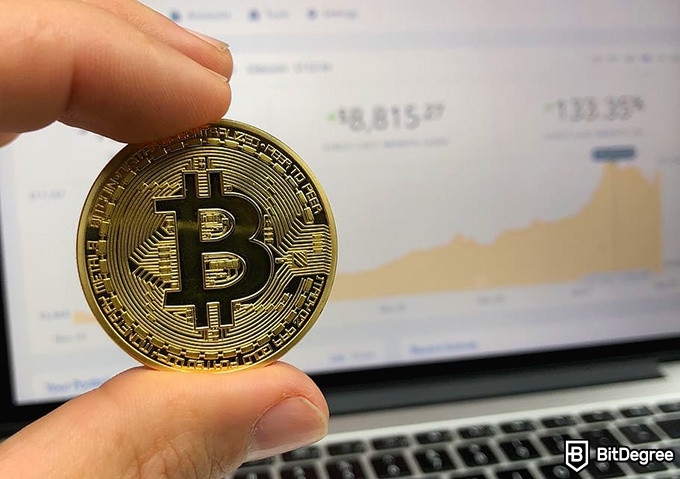
Being decentralized means that the blockchain is able to function without a middleman. In regards to finance, that middleman can be anything or anyone - a bank, an individual acting as an escrow, a developer who’s written code for the dApp (more on those later) that you’re using, and so on.
Following that train of thought, the main benefit of DeFi is the fact that it allows for trustless financial processes to take place within its ecosystem. Let me give you an example so that you’d know what I’m talking about:
Imagine that there’s an election happening in your country. You need to go out and cast your vote on one of the candidates. Traditionally, you’d do it the old-fashioned way - go to a voting booth, write your vote on a piece of paper, and place it in a collection box.
These votes would then be transported to a set facility, where they would be counted, before the results would be announced.
Do you see the problem here? If not, think about it this way - count all of the different instances where foul play could happen, and where someone could tamper with the votes. Situations like these lead people to research what is DeFi crypto, in the first place.
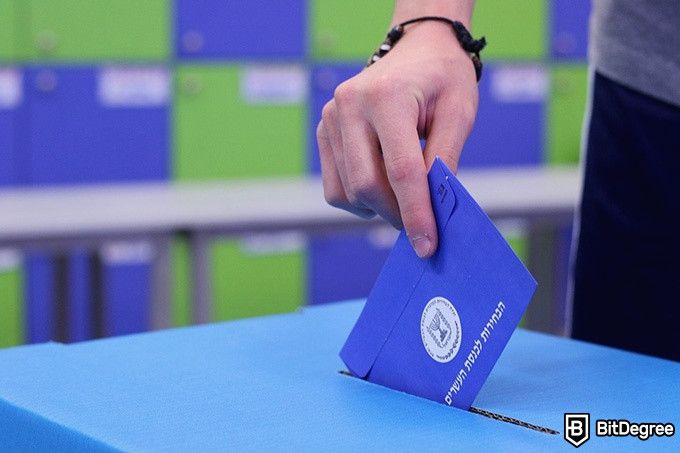
Now, with a decentralized application (dApp), you would cast your vote in the same manner, but it would be a) recorded instantly, and b) impossible to forge. This is thanks to the innate features of blockchain technology - specifically, the fact that information that’s submitted to the blockchain cannot be altered or tampered with in any way.
This is actually where Ethereum comes into play, as well.
Ethereum - The Leader in the DeFi Space
Ethereum is one of the largest cryptocurrencies on the market. More specifically, it’s constantly competing with Bitcoin for being the largest crypto project, in general - some enthusiasts believe that it’s only a matter of time until the former surpasses the latter.
There are many reasons for why Ethereum is as popular as it is - the fact that it’s the primary blockchain for all things DeFi is one of them.
The vast majority of DeFi projects that you’ll see on the market are built on Ethereum. Currently, there are also other blockchains that are viable for such endeavors, too - while learning what is DeFi, you might encounter projects built on Polygon, EOS, or TRON. Still, though - Ethereum remains the undisputed leader.
There are multiple reasons for why that’s the case, but the main one is that Ethereum was the launchpad of smart contracts. This is the core tool behind anything related to DeFi.

A smart contract is an agreement that has been coded into the blockchain. This is, evidently, a very primitive way of looking at it, but the core concept is just that. The main feature that makes these contracts appealing, though, is the fact that they are practically impossible to be breached - once a contract is submitted to the blockchain, there’s no turning back, and no way to reverse it or change its settings.
Thanks to smart contracts, you are able to use a DeFi application that’s completely trustless, and does not have any third-party interference - whether it be lending, gambling, or anything related to NFTs, you’re able to use the dApp and rest assured that there’s no foul play involved (if the dApps is actually legitimate, of course!).
Types of DeFi Applications
In the above-located chapter in this “What is DeFi Crypto?” guide, I’ve mentioned a few different concepts, such as NFTs, lending platforms, and so on. These are but a couple of examples of what a DeFi project can look like.
Now, though, it’s worth taking a look at some of the most popular DeFi project types, so you could have a general idea of what to expect from within the space.
- Stablecoins. If you’ve had any prior dealing with cryptocurrencies or crypto-related projects, in general, the term “stablecoin” might be familiar to you. A stablecoin is simply a cryptocurrency that’s price is pegged to (and often backed by) the United States dollar. Meaning, 1 stablecoins will always be worth $1. Stablecoins are used in multiple different DeFi ventures, and they are considered to be DeFi projects themselves, too.
- Lending / Borrowing dApps. These projects work in the same manner as traditional credit institutions, with the main difference being the fact that they do not have an intermediary. You can borrow assets by using your cryptocurrencies (usually - Ether or a stablecoin) as collateral, or lend crypto and earn interest over time.
- Yield Farms. A yield farm is a DeFi venture where you’d invest (stake) some of your crypto assets, and then receive passive yield in return. As of late, these types of dApps have become very popular, on all of the different blockchains that are used in DeFi (mainly on Ethereum and TRON, though).
- Decentralized Exchanges. If you’ve ever used Uniswap before, you probably know what a DEX - decentralized exchange - is. These are crypto exchanges that do not require for you to pass KYC verification checks, and allow trading cryptocurrencies in an anonymous manner.
- Gambling dApps. If you’re looking to find out what is DeFi in order to learn whether or not your favorite gambling dApp falls under the umbrella of DeFi, you’re in luck - it does. Many gambling projects claim to be trustless, and allow users to gamble their assets in a decentralized, anonymous, and transparent manner.
- Wrapped Coins. This is likely one of the more-intricate aspects of DeFi. In layman’s terms, a wrapped coin can be used (sent, received, transacted with, etc.) on a different blockchain than its own one. So, for example, wrapped ADA coins could be used on Ethereum, and would still retain their price values of the actual, original ADA coins.
The aforementioned example of DeFi being used in some important elections is also a category within the space, usually referred to as a “prediction market”. On top of that, naturally, there are many more decentralized finance-related ventures and projects out there - seen above are simply among the more-popular and more-often-encountered ones.
DeFi's Claim to Fame
While learning all about DeFi - what is DeFi, where it’s used, what are the main types of dApps available, etc. -, you might find yourself wondering about the popularity aspect of the space.
More specifically, how did DeFi go from a niche concept, all the way to becoming an industry-shaking revolution of finance?
Good question! One thing’s for certain - it didn’t happen overnight.
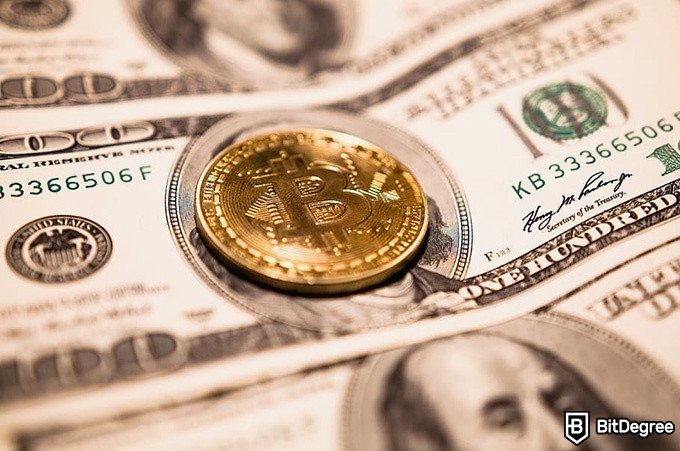
The core elements of the concept of decentralized finance were introduced with the creation of Bitcoin, all the way back in 2009. BTC helped remove the middleman - say, a bank - from the connection you’d have with your money. DeFi does the same thing, except instead of money, it’s often some sort of financial tool.
Not many individuals were wondering how to invest in DeFi until around 2018. Sure, the space had its share of fans and enthusiasts, but the true rise in DeFi projects and their use began together with the increasing popularity of cryptocurrencies worldwide.
The variety of DeFi applications is a huge factor in regards to the popularity of the concept, as well. If it were only stablecoins or lending platforms, chances are that DeFi wouldn’t be where it is today. On the flip side, the fact that it’s as approachable and varied as it is invites a lot of potential new users and investors to the space.

From that point onwards, it’s a cyclical process - more people come into the space, thus the DeFi sector continues booming, thus new people become interested in how to invest in DeFi, thus they start coming into the space.
As time goes on, though, there are new and up-and-coming projects, new dApps, and new DeFi ideas coming up. The space is still relatively new, and many enthusiasts speculate that, while you’re learning what is DeFi crypto, the sector, as a whole, will continue to grow and develop.
Regulations - The End of DeFi?
Whilst you’re learning what is DeFi, one of the bigger subtopics that you may come across has to do with regulations in the space. The general sentiment online is that they’re going to be really bad news for decentralized finance.
Why is that the case? Well, it’s in the name, really.
Regulations have always been a “hot topic” in the crypto space. As time goes on, it would seem that they’re becoming a more and more prominent issue, and governments around the world are slowly, but surely employing them.
Just look at China, as an example. The Chinese government has banned any and all new cryptocurrency-related projects, and while the country aims to issue a digital currency of their own, decentralized cryptos are now banned there.
The US is turning towards the crypto space, as well. While there are struggles in passing crypto-related bills, it would seem that some sort of regulatory crackdown is inevitable.

As you can probably imagine, with DeFi being centered around the concepts of decentralization and anonymity, this isn’t ideal. Is it really the end of DeFi, in general?
Well, no - definitely not. However, it’s worth acknowledging that the space is going to need to adapt and conform, at least to some extent.
Regulators and regulatory organizations are aware of the DeFi space, and projects such as decentralized exchanges or lending and borrowing platforms. No matter if it’s a stablecoin, or an NFT-related venture, each specific sector of DeFi should be approached with rules and regulations that are specific to that sector.
It’s also worth acknowledging that the DeFi sector is just too big to ignore, or to simply ban, outright. In short, no matter what sort of future regulations DeFi may see or encounter, the chances of it being banned, and all of the decentralized projects overturned is pretty miniscule.
The Pros and Cons of Decentralized Finance
Up to this point in the guide of what is DeFi, we’ve discussed a lot of different aspects regarding the subject, and mentioned multiple reasons why it’s an interesting topic, in general.
With all of that being said, though, it’s probably a good idea to boil things down to some specific benefits and shortcomings. While I do acknowledge that this isn’t always a good way of viewing things, and that a sphere as intricate as DeFi can’t really be thoroughly examined in such a fashion, it's still a good method to place things into perspective.
Right, then - first of all, let’s discuss the most prominent benefits that DeFi has to offer to all casual users of the space:
- Decentralization and Anonymity. While these two features are a no-brainer when it comes to DeFi, they do still need to be mentioned, nonetheless. Yes - with participating in different DeFi services, you’ll be able to retain your anonymity, and transact in decentralized crypto coins and tokens. There are no middlemen involved, and all transactions are public and available for everyone to see.
- Speed. Thanks to the blockchain technology behind all of the DeFi ventures, transactions and other processes are settled in a matter of seconds. You don’t need to wait for days on end in order to get that loan approved, or to stand in line so that you could exchange one currency for another.
- Less Bureaucracy. With traditional financial institutions, you’ll often be bombarded with lots of papers that are filled with industry-specific jargon, to the very brim. With DeFi, chances are that you’ll be able to skip many of the bureaucratic processes, and will have the possibility to concentrate on the most important information.
- Simpler to Get Into. DeFi often doesn’t have any form of gatekeeping. In most cases, all that you need in order to start off with some sort of a DeFi project is a cryptocurrency wallet, and some crypto coins (usually, Ether).
- A Lucrative Area. While this is probably the most subjective point on this list explaining what is DeFi and what are its benefits, it’s still a huge reason why people choose to enter the space, nonetheless. There’s no denying that decentralized finance can be lucrative - if you’re looking at how to invest in DeFi, you likely think so yourself!
With the benefits and most-notable features out of the way, let’s now take a look at some of the less-ideal parts of DeFi, and what you should be keeping in mind if you do actually decide to enter the space:
- A Notable Number of Scams. With all this talk about regulations and DeFi becoming increasingly more mainstream, you would think that the space has become relatively safe. This, however, is not necessarily the case. To this day, there are multiple scams and rug pulls running in the DeFi world. Some are a bit more obvious than others, but this doesn’t make them any less dangerous.
- Regulatory Uncertainty. Once you learn what is DeFi, you’ll have a pretty good understanding of the place that regulations occupy (or, rather - will occupy) within the space. That being said, as of writing this guide, this place is still rather uncertain. Some DeFi enthusiasts aren’t all that excited about the lack of clarity regarding the topic, since strict new rules can surely influence the sector significantly.
- A Volatile Space. The cryptocurrency market has a pretty established reputation of being extremely volatile. It still being a young and developing space, there’s a lot of uncertainty floating around, and any major news can sway prices of these assets into the double digits, percentage-wise. Well, the same extends to DeFi ventures, too - you never know if you’re using the next big project, or one that’s about to reach its peak, and then drop off, like it never existed. Thus, your investments are always prone to being swept out of your hands.
As you can probably see for yourself, both the benefits and drawbacks of the DeFi scene are intricate and notable. On top of that, do keep in mind that the list above includes only the more well-known features - that aside, there are plenty of smaller points to keep in mind, as well!
How to Get Started in DeFi?
So - after reading through this article and finally figuring out what is DeFi, you’ve made the decision that you do, in fact, want to check the space out for yourself, and get into some of the more-interesting projects.
Great! How does one go about doing so, though?
Well, you’ll need a few things figured out, beforehand. Two, specifically - you’ll need to get yourself a proper cryptocurrency wallet, and then purchase some coins to get started.
Wallet-wise, without a single doubt, your best bet is to look at the hardware wallet industry. While you can always use multiple wallets, or even software ones, exclusively, you will not find better protection for your cryptocurrencies and tokens than you would with a hardware device.
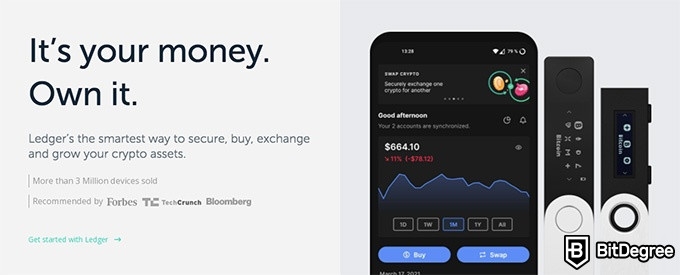
In this space, Ledger and Trezor are the undisputed leaders. Specifically, you should be looking at either the Ledger Nano X, or the Trezor Model T.
Both of the wallets in question are leaders in the space. They are both secure and reliable, and offer users advanced levels of functionality. You can store a wide variety of crypto assets on both the Nano X and the Model T, and also expect the wallets to be sturdy and well-made, too.
Once you have your selected wallet (or wallets, if you want to be extra-careful), the next step is to find a cryptocurrency exchange that you could use in order to purchase some crypto coins (in most cases - ETH).
Now, there are many different exchanges on the market - centralized and decentralized ones, AMM-based platforms, P2P exchanges, and so on. However, two stand out of the crowd pretty significantly - Binance, and KuCoin.
The exchanges in question are the two leaders on the market. They have both managed to build themselves reputations of being trustworthy and complying with all of the regulatory standards and requirements that might be issues towards their activities - this is good news if you want to keep things simple and official.
|
|
|
|
|---|---|---|
| Hardware | Hardware | |
| Safely Storing, Sending, and Receiving Different Cryptocurrencies | Easily Controlling Funds and Managing Balance | |
| All Ledger Nano X Coupons | See All Coupons of Best Wallets | |
| The tried and true hardware wallet from Ledger with all the essential features. | One of the most-secure cryptocurrency hardware wallets on the market. | |
| Visit site Read review | See TOP10 Brands Read review |
Table: Some general information about the Ledger Nano X and Trezor Model T hardware cryptocurrency wallets
Registering on either of the exchange platforms, you’ll need to pass KYC verification checks. Once your identity is verified, your trading limits will increase, and you’ll be able to purchase some Ether coins by first depositing fiat money into your account, via a bank transfer, credit or debit card, or else.
Once you do have the coins, and have transferred them to your separate wallet out of the exchange platform, you’re all set - all that’s left to do now is find a DeFi project that you’re interested in!
All in all, while the entire process might seem complicated and somewhat tiresome, I assure you - it’s not! Registration on an exchange platform is usually pretty quick, while finding a reliable crypto wallet is also simple, as long as you follow a few core rules, and don’t compromise on the security of your assets.
Conclusions
So, then… What is DeFi?
As you’ve probably gathered from the article up to this point in time, decentralized finance refers to blockchain-based financial services that operate in the crypto sphere. Many DeFi projects are still relatively new, even though the space has already had a huge impact on the financial sector of the world.
Most decentralized finance-related projects are built on the Ethereum blockchain, due to just how popular it is, and the fact that it has smart contract functionality. Smart contracts themselves are at the core of DeFi - they are the elements that eliminate the middleman, and allow dApps to function in a truly decentralized manner.
There are multiple pros and cons in regards to DeFi, too. You’re able to remain anonymous with all of your transactions, yet see all of those transactions taking place on the blockchain - this guarantees transparency. On top of that, DeFi is also considered to be much simpler to get into and understand, especially when compared to the bureaucratic processes of some traditional financial institutions.
|
|
|
|
|
|---|---|---|---|
| Beginners | Advanced Users & Beginners | Best for Buying & Selling Crypto with Small Fees | |
| United States, Germany, United Kingdom, France, Canada, + 190 more | Turkey, Argentina, Vietnam, Ukraine, + 180 more | United Kingdom, India, Russia, Mexico, + 150 more | |
| All Kraken Coupons | See All Coupons of Best Exchanges | See All Coupons of Best Exchanges | |
| One of the best crypto exchanges, especially in the US. | One of the leading crypto exchange platforms in the industry. | A reliable and well-established cryptocurrency exchange platform. | |
| Supported ✅ | Not Supported ❌ | Not Supported ❌ | |
| Visit site Read review | See TOP10 Brands Read review | See TOP10 Brands Read review |
Table: Some general information about Binance and KuCoin
On that note, though, it’s worth mentioning that there are a lot of criticisms aimed at the space, as well. For starters, it’s still an unregulated and anonymity-driven market - this, in turn, means that there are quite a few malicious players out there, that are looking to access your funds.
Following that, same as the crypto market, DeFi is still a very volatile industry. The volatility may sway some individuals away, especially with the regulatory uncertainty looming in the background.
If you do decide to get into DeFi, though, you’ll need a reliable wallet, and also some Ether coins, too. For the wallet, you should look at either Ledger or Trezor, while Ether can be bought on an exchange platform, such as Binance or KuCoin.
With that said, thanks for reading! I hope that you now know what is DeFi crypto, and are a bit more aware of the space, in general. Until next time, and good luck!
The content published on this website is not aimed to give any kind of financial, investment, trading, or any other form of advice. BitDegree.org does not endorse or suggest you to buy, sell or hold any kind of cryptocurrency. Before making financial investment decisions, do consult your financial advisor.





